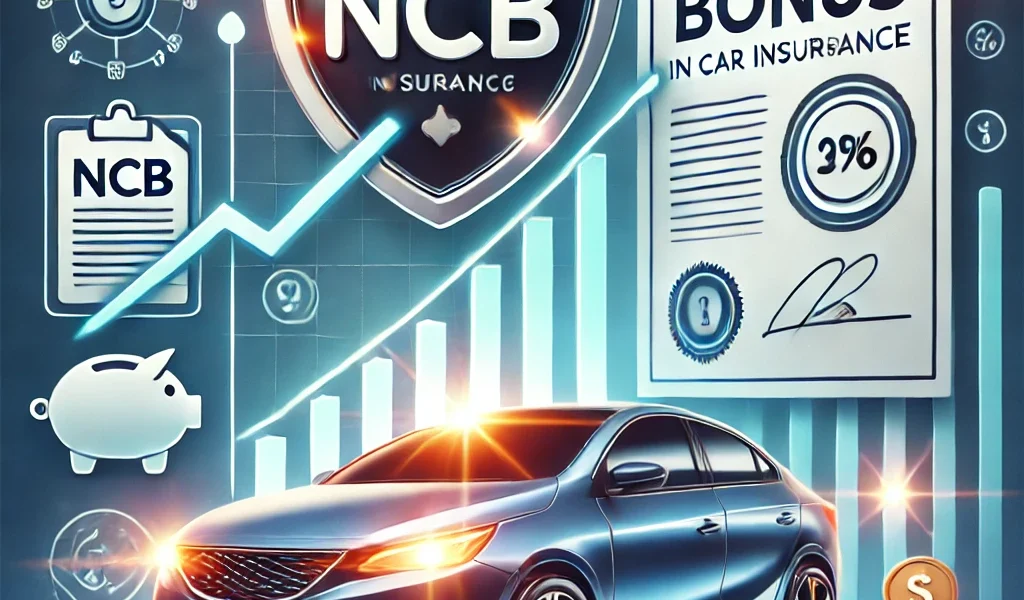Introduction
No-Claim Bonus (NCB) is one of the most attractive incentives in car insurance policies. It serves as a reward for policyholders who do not file claims during the policy tenure. By maintaining a claim-free record, drivers can enjoy significant discounts on their insurance premiums. Understanding how NCB works and how to maximize its benefits can help you save a substantial amount over time.
In this blog, we will discuss what NCB is, how it works, its benefits, and strategies to make the most of it.
What is No-Claim Bonus (NCB)?
No-Claim Bonus (NCB) is a discount provided by insurance companies to policyholders who do not file any claims during their policy period. This discount is applied to the renewal premium and can accumulate over consecutive claim-free years, reaching up to 50% in some cases.
NCB is applicable only to the own damage portion of the car insurance policy, meaning it does not apply to third-party insurance, which is mandatory by law.
How Does NCB Work?
The NCB discount increases progressively with each consecutive claim-free year, as follows:
| Claim-Free Years | NCB Discount (%) |
|---|---|
| 1 Year | 20% |
| 2 Years | 25% |
| 3 Years | 35% |
| 4 Years | 45% |
| 5 Years & More | 50% |
If you file a claim, your accumulated NCB resets to zero, and you have to start over. Therefore, understanding how to preserve and maximize your NCB is essential.
Benefits of No-Claim Bonus
- Lower Premiums: A higher NCB percentage can significantly reduce your insurance renewal premium.
- Encourages Safe Driving: Since claims impact NCB, drivers are motivated to drive cautiously and avoid accidents.
- NCB Transferability: If you switch your insurance provider, you can transfer your accumulated NCB to the new insurer.
- Applicable on Policyholder, Not Vehicle: If you buy a new car, your NCB remains applicable, ensuring continued benefits.
How to Maximize Your NCB Savings
To take full advantage of NCB, follow these strategies:
1. Avoid Small Claims
If your repair expenses are minor and affordable, consider paying for them yourself instead of filing a claim. This helps retain your NCB, which can result in higher long-term savings.
2. Opt for an NCB Protection Add-On
Many insurers offer an NCB Protection Add-On that allows you to make a certain number of claims without losing your accumulated NCB. This is a valuable option if you want to secure your bonus.
3. Drive Safely and Follow Traffic Rules
By maintaining safe driving habits, you can minimize the risk of accidents and, consequently, the need for claims.
4. Transfer NCB When Changing Insurers or Vehicles
If you switch insurers or buy a new car, ensure that you transfer your NCB to continue enjoying discounts. Obtain an NCB certificate from your existing insurer for a smooth transition.
5. Renew Your Policy on Time
If you fail to renew your car insurance policy within 90 days of its expiry, you will lose your accumulated NCB. Always renew your policy before the due date.
Common Misconceptions About NCB
1. NCB is linked to the vehicle, not the policyholder – Incorrect. NCB is attached to the policyholder and can be transferred to a new vehicle.
2. Any claim will reset NCB to zero – Partially true. If you do not have an NCB protection cover, filing a claim will reset your NCB.
3. NCB is applicable on third-party insurance – False. NCB is applicable only on the own damage component of a car insurance policy.
Conclusion
No-Claim Bonus (NCB) is a significant cost-saving benefit in car insurance that rewards responsible and claim-free driving. By adopting safe driving habits, avoiding small claims, and utilizing add-ons like NCB Protection, you can maximize your savings and enjoy reduced premiums year after year.
Always ensure you transfer your NCB when changing vehicles or insurers and renew your policy on time to preserve your accumulated benefits. With smart strategies, you can make the most of NCB and enjoy financial advantages in the long run.




